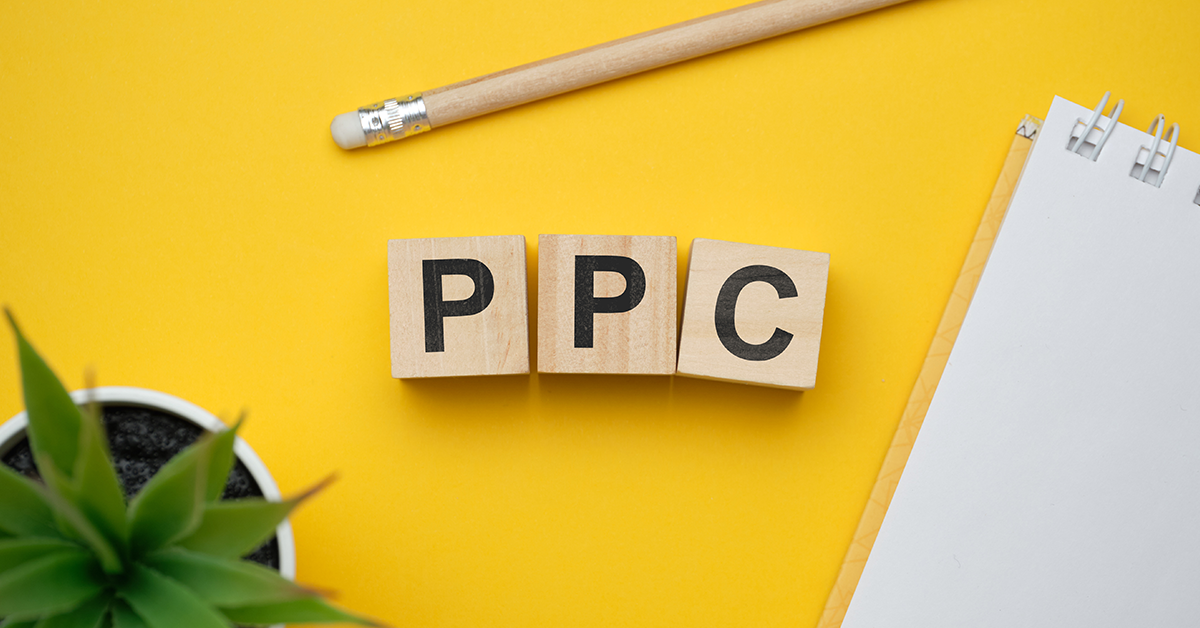If you have an online business, you’ll want to employ paid search in your marketing strategy. First, you need to think about what the best paid strategy is for your business.
In this blog, we will discuss what makes a great paid search ad and give 5 examples of effective paid search campaigns which you can use to inspire your own paid search strategy.
What is paid search?
Paid search, also referred to as Search Engine Marketing (SEM) or Pay-per-click (PPC), is a form of digital marketing where search engines, such as Google or Bing, permit advertisers to place adverts directly on their search engine results page (SERP). The SERP, is a page full of listings related to a user’s search query, it displays both organic results and paid results although paid ads are displayed at the top of the page.
The easiest way to distinguish between paid and organic search results is by looking for the little word ‘Ad’ before the listing. This signifies that a business has paid to have its webpage displayed at the top of the SERP.
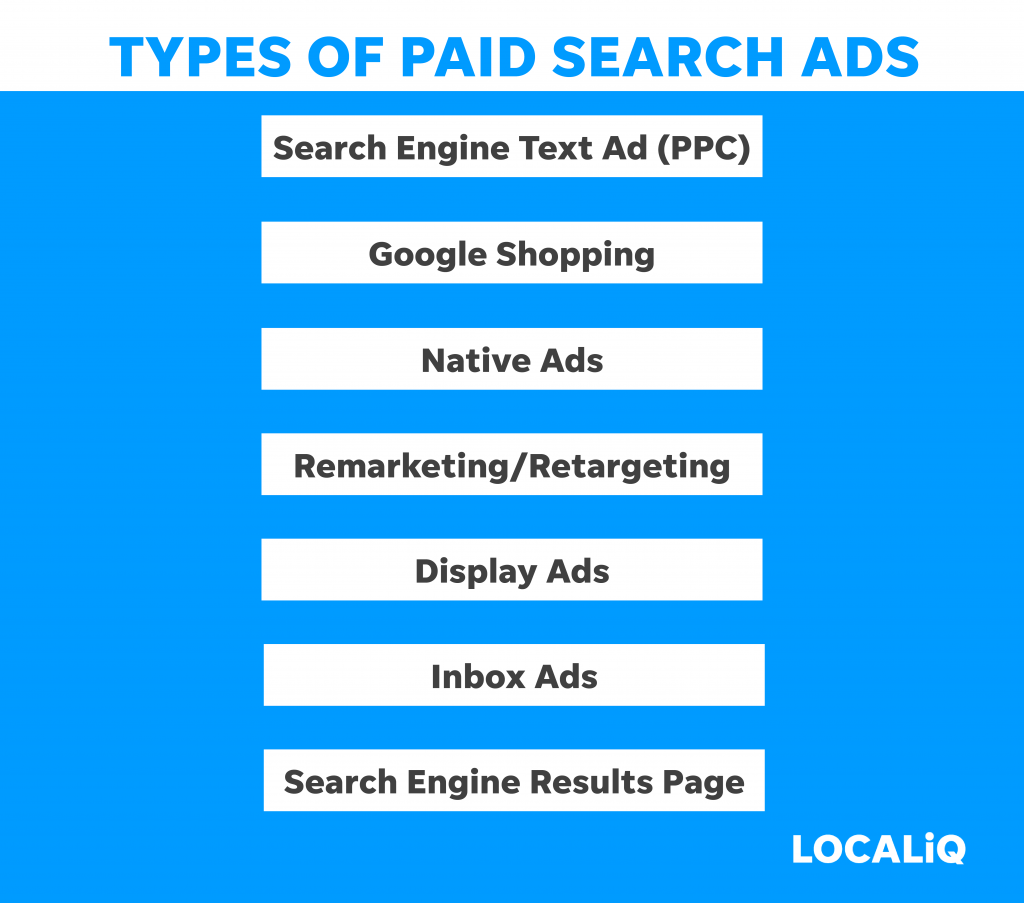
Advantages and disadvantages of paid search
Here are some of the many benefits associated with paid search advertising:
- Variety of detailed targeting options
- Increase brand awareness and website traffic
- Generates qualified leads and interested prospects
- Time efficient
- Geotargeting
- Delivers instant and measurable results
- Produces an impressive Return on Investment (ROI)
- Detailed data analytics
- Budget-friendly
Learn the full pros and cons of paid search.
What makes a great paid search ad?
First, let’s look at what makes a paid search ad effective, here are 3 key elements to keep in mind:
1. Keywords
“Keywords” are words or phrases that users type into search engines, such as Google, to find what they are looking for. You need to select high-quality, relevant keywords to reach the people interested in your products/services who are likely to convert. If you target irrelevant keywords, you won’t attract the right audience, which will be a waste of your marketing budget.
5 tips for keyword research:
- Use 1-2 long-tail keywords.
- Google’s related searches and auto suggestions are a great place to start.
- Choose keywords with a high search volume and low keyword difficulty.
- Include your keywords in your title, URL, meta description, headers, and paragraphs.
- Be mindful to avoid keyword stuffing.
Find out how to conduct effective keyword research.
2. Landing Page
A landing page is a page that your customer will land on after clicking your ad. A landing page can make or break the success of your campaign. If your ads aren’t performing well, it might not actually be the ad but rather your landing page.
It is important to have a good, informative landing page that pushes the customer to take a specific action e.g., purchase a product, fill out a form, get in contact, etc. A landing page that fails to convert is worthless and if you are paying to send traffic to it, you will waste your time and money.
Here are some things to consider when designing your landing page:
- Start with an appealing offer.
- Captivating title and subtitles that mirrors your search ad.
- Clear design and layout.
- Incorporate visually engaging elements (images and/or video).
- Enticing, credible and concise sales copy that is relevant to your keywords.
- Add a responsive form that is straightforward to fill out.
- Stand out CTA button.
- All important information should be at the top of the page.
- Avoid exit links.
The complete guide to (persuasive) landing pages – with examples.
3. Call To Action
Cal-to-action (CTA) is a marketing term for any design to prompt an immediate response or encourage action. They are often presented as buttons that instruct an action such as, “Buy Now”, “Subscribe” or a softer CTA like “Read More.”
CTAs are great because they provide users with direction and encourage them to explore different parts of your website. They are an effective way to convert your customer and increase your conversion rates.
Think about what action you want your consumers to take. This can include signing up for a free trial, purchasing a product, booking a consultation, etc. You’ll want to lead your customers down a conversion path, so focus on one action per page to ensure you are driving the desired results.
Learn how to successfully run a paid search campaign.
5 effective paid search examples
1. Etsy seasonal campaign

This seasonal PPC ad from Etsy on Google is great for increasing brand awareness and website traffic. Here, Etsy includes “Christmas Gifts” in the heading, which is a relevant keyword to reach the people interested in browsing or buying products from their marketplace.
This ad from Etsy is so effective because it doesn’t just list their Christmas gifts, but the ad also promotes their gift guides, personalised gifts, star sellers, and gifts under £30, through sitelinks, so consumers can access different parts of the website and quickly source the products they are looking for.
2. Semrush
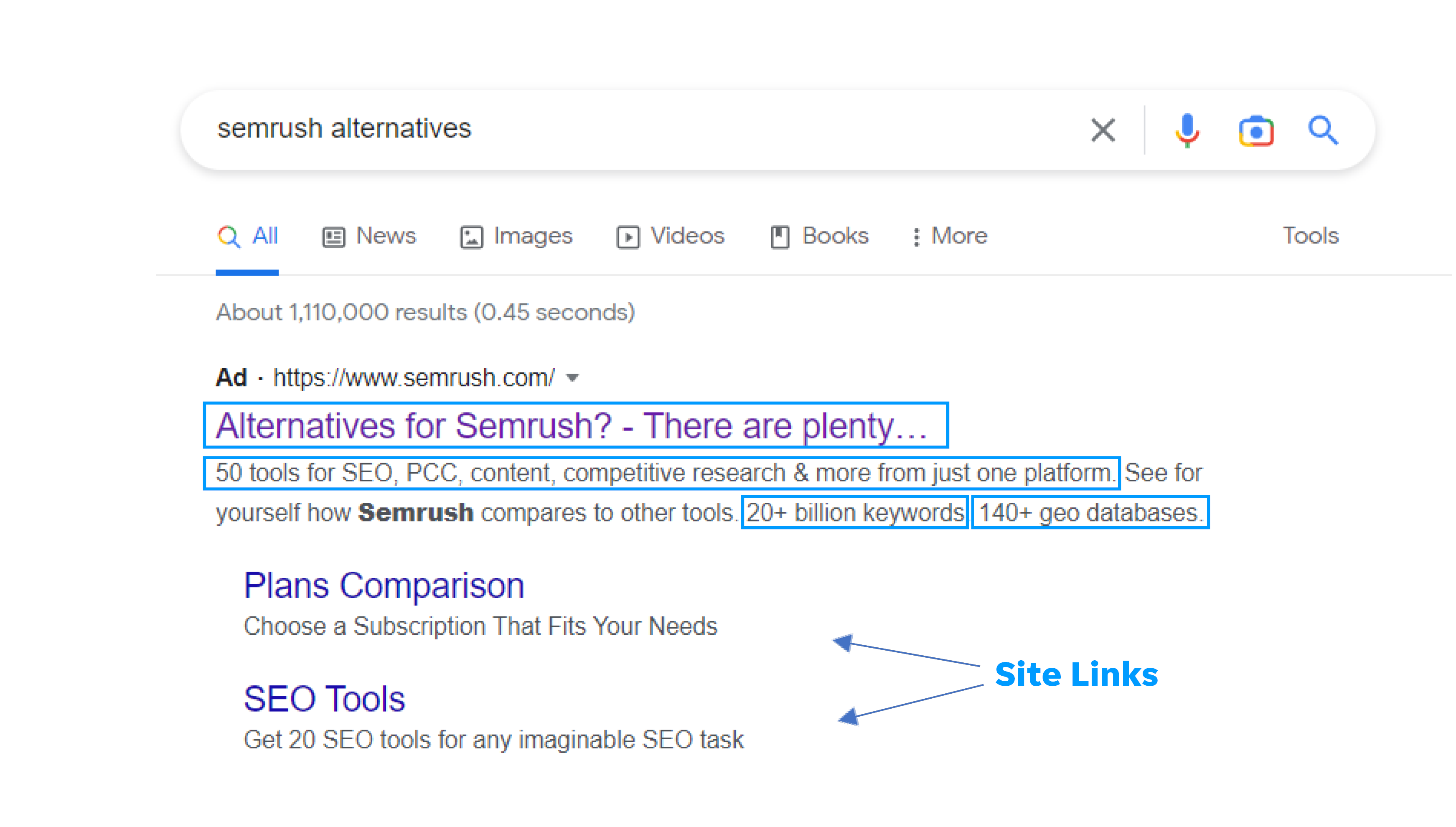
In this example we see that Semrush have included “Alternatives for Semrush?” in their heading in an attempt to steal back traffic searching for their competitors. This strategy is brilliant for targeting users in the consideration phase of the buyer journey and for driving an impressive return on investment (ROI).
The clever thing about this ad from Semrush is its use of ad copy. They begin by responding to the searchers’ query confessing there are alternatives available, before emphasising the reasons why they are better.
In the copy below the headline, they call out benefits of using their platform ‘50 tools for SEO, PPC, content, competitive research’, ‘20+ billion keywords’ ‘140+ geo databases’, and they even take it a step further telling people to ‘see for yourself how Semrush compares to other tools’.
Additionally, they have provided thoughtful sitelinks to their ‘Plan Comparison’ and ‘SEO Tools’ webpage. Sitelinks are an important feature for SEO, they can make your result stand out and also help with user navigation.
When users click through to the landing page, Semrush again highlights the advantages of choosing their marketing tools over their competitors. They do this in a number of ways;
- Use a captivating title and subtitles with enticing sales copy ‘Captivate your audience online. On all key channels. With just one platform’.
- They provide real-life client reviews and testimonials to increase their credibility.
- Incorporate a stand-out CTA button throughout the landing page, prompting the consumer to start a free trial.
- Important information explaining what is included in their tool packages.
In essence Semrush are capturing traffic from their competitors by promoting reasons why they are better.
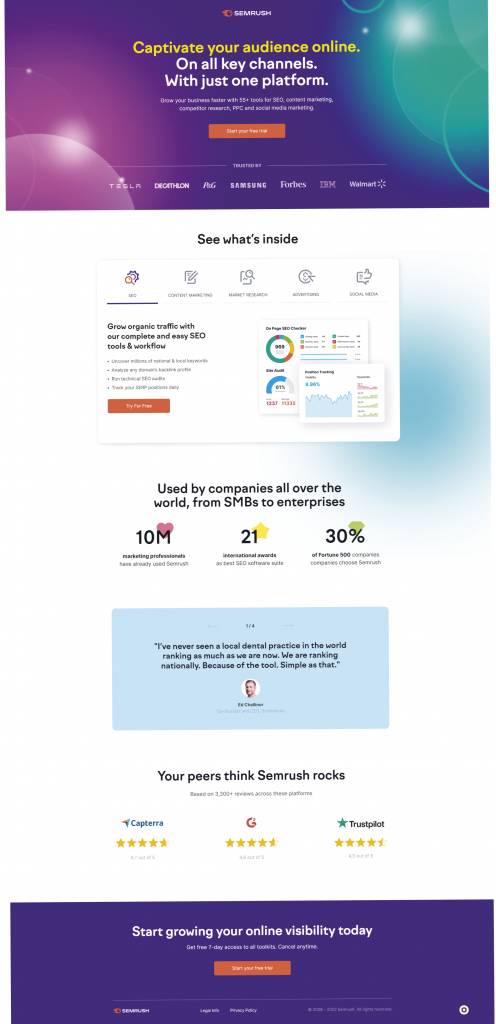
This paid search strategy is best for businesses in highly competitive industries. To be successful with this type of paid search campaign you’ll want to target high-intent keywords which imply people are searching for a competitor and use ad copy that highlights the features that set your brand apart from the competition.
3. Emergency Hero

This example by Emergency Hero focuses on search intent (the term used to describe the purpose of an online search). By centering ads around why someone conducts a specific search makes it easier for you to address the searchers pain points and convince them that your product/service is the best option.
You’ll want to think about which words your customers use when looking for your products or services online. For example, when someone searches “plumbers near me,” there’s a good chance they need a plumber (and possibly urgently).
What is great about this example is Emergency Hero understands that their customers often require urgent repairs and have used ‘We Specialise in Emergencies’ in their headline to attract consumers who are searching for immediate services.
Additionally, they include supplementary ad copy to inform readers about the specialist services they offer by qualified individuals to help establish trust. Furthermore, they have quick links to their contact us page so people can easily get in touch.

They have structured their landing page in a really effective way with a clear design and layout which they have supplemented with industry specific imagery. At the top of the page they have a punchy headline which is relevant to the search query ‘Do you need an emergency plumber? We are available 24/7’, alongside Trustpilot reviews which convince the consumer it is a business that they can trust.
It is clear to see that Emergency Heros’ have thought about the action they want their consumers to take. Throughout the page, there is a variety of CTAs which lead consumers down a streamlined conversion path to get in touch either through a phone call or submitting a form to book a plumbing appointment.
4. Gayhurst School
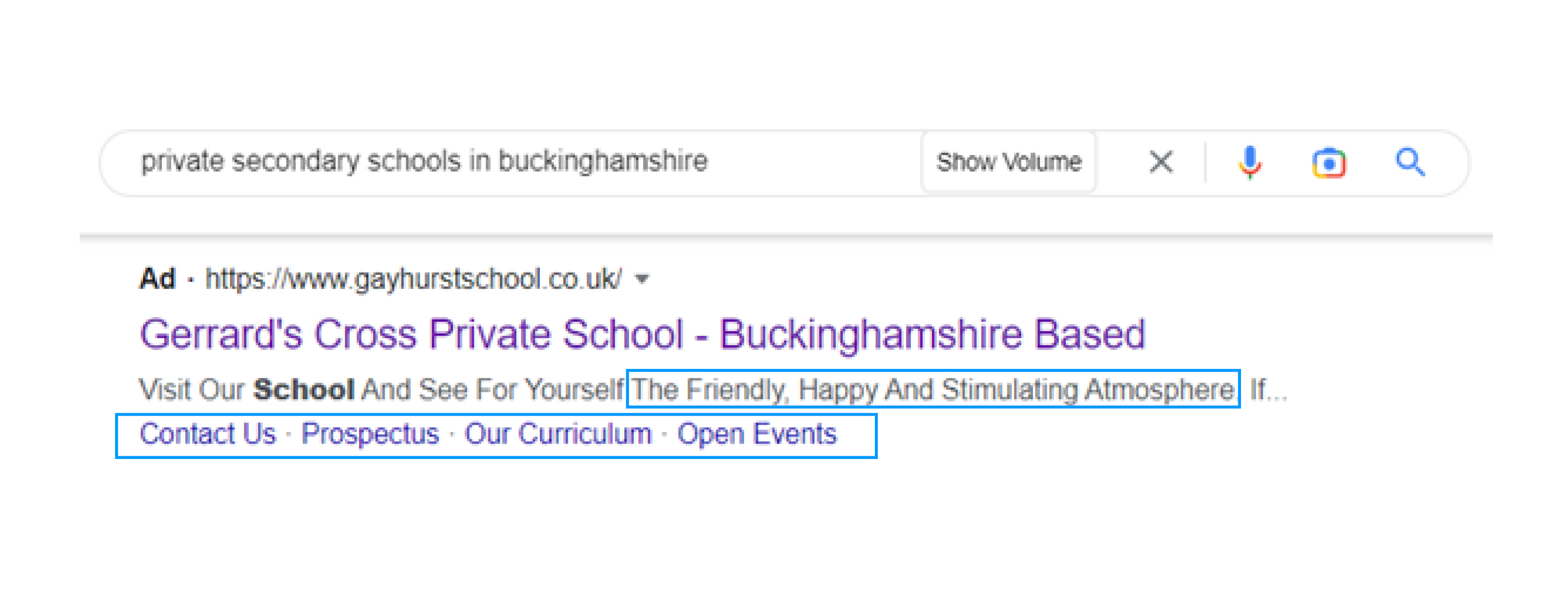 This is an example of one of LOCALiQ’s current clients, Gayhurst School. LOCALiQ is running a paid search campaign for Gayhurst School, to generate leads and raise brand awareness.
This is an example of one of LOCALiQ’s current clients, Gayhurst School. LOCALiQ is running a paid search campaign for Gayhurst School, to generate leads and raise brand awareness.
We really like this ad because it not only highlights the ‘Friendly, Happy, and Stimulating Atmosphere’ which the school heavily prides itself on, but the ad also uses to provide users with an wealth of information. This ad includes sitelink extensions to provide searchers with useful information that entices them to click.
For this search ad, LOCALiQ’s strategic keyword plan consisted of 83 keywords, generating an average Click-Through-Rate (CTR) of 5.41% compared to the industry benchmark of 2.2%. Overall, the SEM campaign brought in 283 leads between October 2021 and August 2022, of which over 50% were direct calls to the school, proving it to be an effective paid search campaign.
Discover the brilliant results we produced for our client and find out more information by downloading our Gayhurst school case study. For more information on why Gayhurst choose us as their digital marketing partner read our Q&A blog.
5. Bonus print
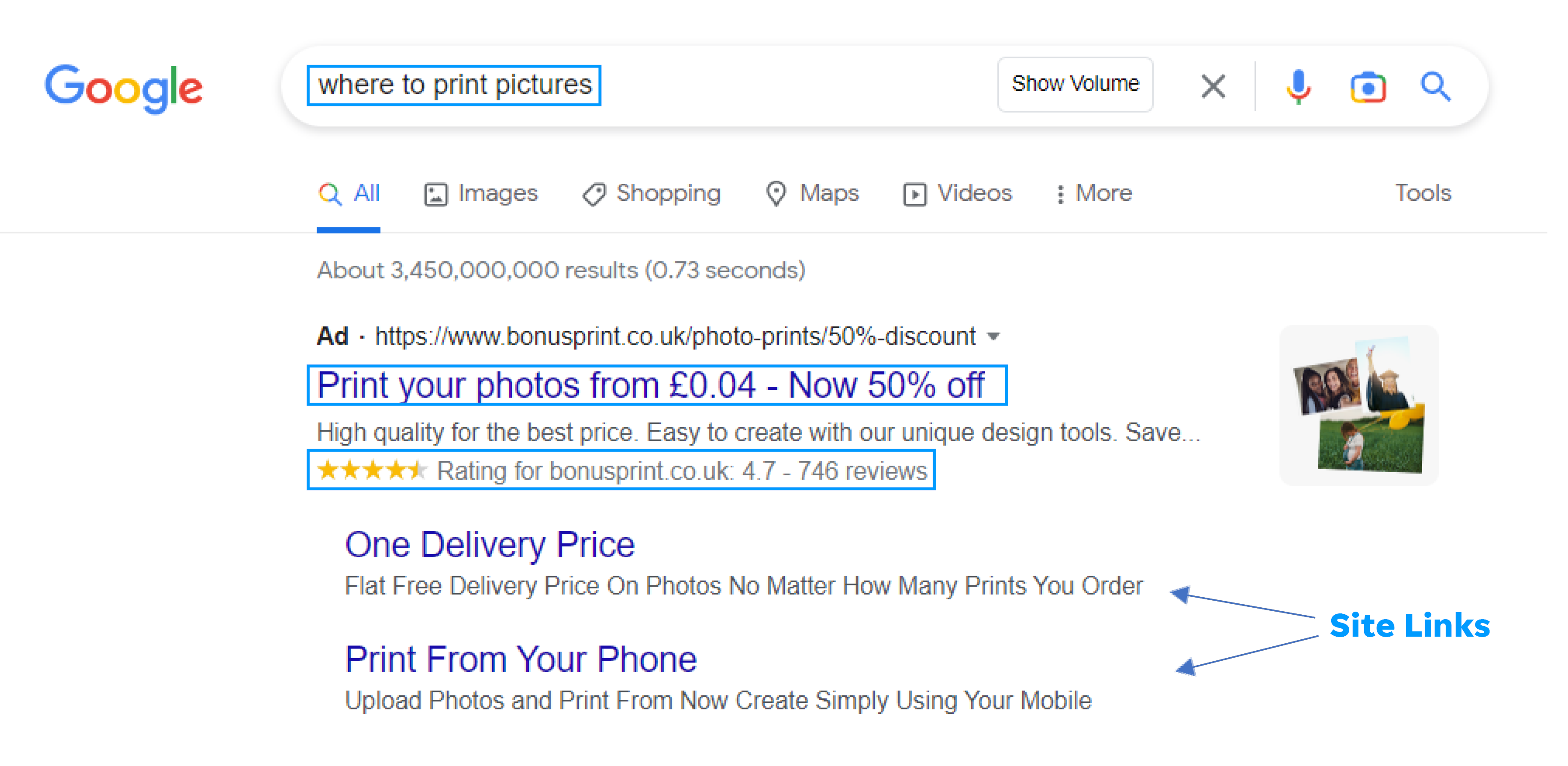
Another example of an effective paid search ad is this one from Bonus Print. They have focused their ad on their pricing incentives. Offering a discount or some sort of deal is always going to attract people, as let’s be honest who doesn’t love a discount? If you already offer a discount for first-time buyers, this is a great place to promote it.
In addition to the pricing incentives this ad has two visual elements; a 4.7/5 star rating and an image of printed photos, which both increase the companies’ credibility and develop consumers trust in the business. If your business has a good star rating, you’ll definitely want to display it within your ad.
Learn how to add star ratings to your Google Ads
Moreover, the long-tail keyword Bonus Print is targeting “where to print pictures”, indicating that the searcher is ready to take action, making the discount incentive even more tempting.
Are you unsure what type of paid search ads to use?
These examples of paid search advertising may leave you unsure of which ads to use for your business. At LOCALiQ we specialise in PPC management services, offering you dedicated support across paid search.
If you need help launching your paid search advertising campaign, we have a team of digital marketing specialists ready to put your business on the map with super-effective PPC advertising campaigns. Contact us today and discover how we can help you achieve your objectives.
Further Resources:
- Paid Search Vs Paid Social: Which Is Better for Small Businesses?
- The Complete Guide to Google Ads.
- What Are Featured Snippets? And How to Get Them.
- Google Ads Destination Requirements Policy Update: What It Means for Your Business.





